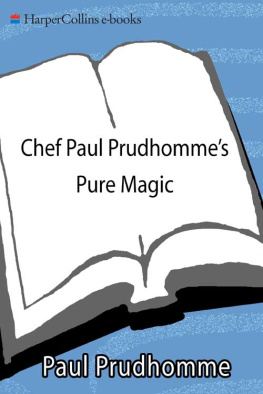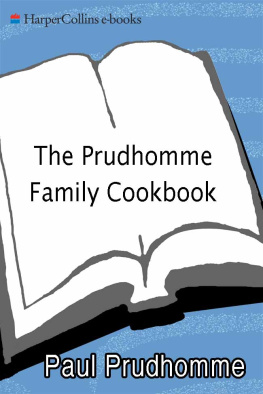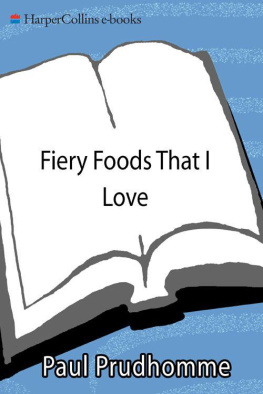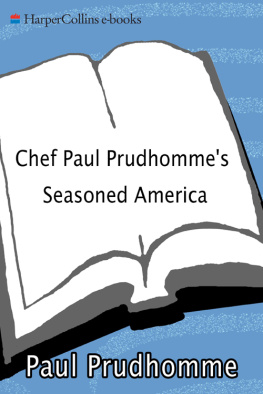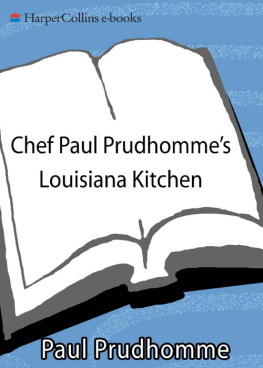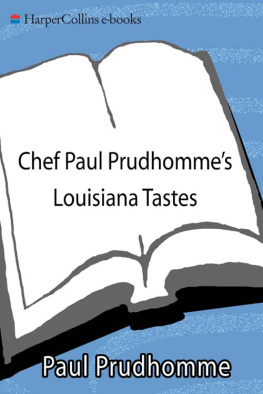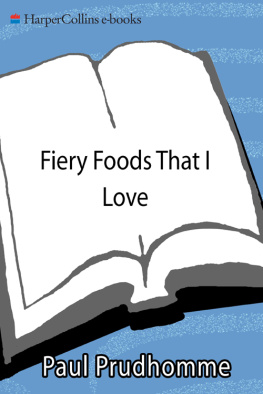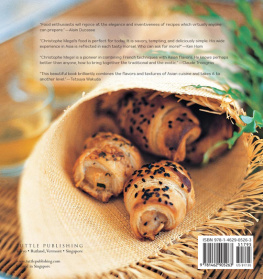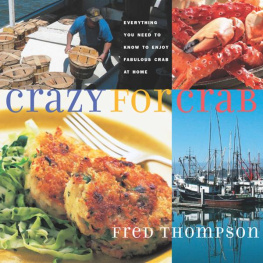Let me tell you how Magic Seasoning Blends were born.
I grew up on a farm, the youngest of thirteen children. Mom was a great cook, skilled at using all the wonderful fresh ingredients that south Louisiana had to offer, along with herbs and spices to season them. I grew up surrounded by the unbelievable aromas of green coffee being roasted, flour being browned, and fresh fish being fried. I have happy memories of boiling crawfish in a huge iron kettle with the entire family gathered around, all of us rejoicing in the fantastic spicy fragrance and our anticipation of how great the meal was going to be.
I remember how good all of our food tasted, and how emotional we were about itwed take a bite and just couldnt resist telling everyone within shouting distance how wonderful it was. I simply assumed that everyone had food as exciting as ours and that they got as steamed up about it as we did. So when I traveled across the country to learn about food in other places, I was really surprised that the level of excitement I had experienced all my life just didnt exist elsewhere. There was a lot of good food out there, but people didnt have the same level of emotional involvement.
When I cooked for people in other parts of the country, I was glad to see that they reacted with enthusiasm to the kinds of seasonings I used. For instance, during the time I worked at a really fine Italian restaurant in Denver, I would secretly bring in herbs from outside to add to their recipes. Id have oregano in one pocket, basil in another, and so on. I got tired of trying to remember what was in which pocket, so I started mixing the blends at home. They worked pretty well, but I was always afraid someone might catch me. Management might not have approved of what I was doingafter all, I was messing with their recipesbut patrons raved about all the dishes that came from my station.
When I returned to Louisiana, I didnt immediately put that discovery to use because my first project was to record and save traditional recipes of the region that were in danger of being lost. Familiesincluding minewere changing their ways of cooking and not passing on their knowledge to younger generations. My wife, K, and I started our restaurant, K-Pauls Louisiana Kitchen, and I published Chef Paul Prudhommes Louisiana Kitchen cookbook, both to help document this kind of cooking and to give pleasure to people who got as excited about our food as we did.
Customers often would ask what kind of seasoning we used for this dish or that one, and for a while we simply explained that we used a balance of herbs and spices and gave them little samples. After a while, though, people seemed embarrassed to ask repeatedly for free samples, so in 1983 we started mixing up batches and putting them in plastic zip bags to sell.
Well, the blends became so popular that soon we couldnt keep up with demand, so our next step was to mix up larger amounts and package them in bottles. We worked on weekends, when restaurant employees wanted to earn a little extra income, but we still had problems. I remember how hard it was to get the labels to stick to the bottles, and no one wanted the job of wetting the glue on the label. You wouldnt believe how excited we all were when we got our first glue machinea simple thing with rollers and a reservoir for the gluewhich could label maybe five bottles a minute. We thought we were Big Business! Our first salesman sold our products out of the trunk of his car, but before very long, we had so much business that his trunk was too small. So we bought a truck and I learned a wonderful new word: distributor. With help from our new business contacts, we started placing our Magic Seasoning Blends in local supermarkets, then regional ones. Before we knew it, our distribution network stretched all the way across the country. Since that time I have been privileged to make friends and meet wonderful people almost everywhere in the U.S. and around the globe. And all the while we have grown and grown. Our Magic Seasoning Blends family of employees still has many original membersmost have been with us almost a decade. We truly have grown together. Today our automated production line handles more than one hundred units a minute, and our blends are available literally all over the world.
Magic Seasoning Blends work well with all types of cuisineseverything from Italian to Mexican to French to Chineseor wherever good food is appreciated. Our products are all natural and contain no preservatives or MSG. You can substitute them in all of your everyday recipes by simply eliminating the herbs, spices, salt, and pepper called for and substituting approximately two-thirds of the amount of Magic Seasoning Blends. Or simply sprinkle it on your fish, vegetables, meat, eggs, etc., before you begin your cooking process.
I sincerely hope you enjoy using Magic Seasoning Blends and that this new book will add to your cooking and eating pleasure.
Good Cooking!
Good Eating!
Good Loving!

Beef Vegetable Soup
MAKES 6 MAIN-DISH SERVINGS

Nothing fixes whatevers wrong like a big steaming pot of homemade soup! And when you grow up on a farm, as I did, you get a lot of vegetable soup, made even more delicious by a big, meaty bone. If you want to serve your soup the way we do in Louisiana, place a heaping tablespoon of cooked rice in the bowl first.
2 quarts beef stock (see page 198)
2 pounds bone-in beef soup meat, about 1 inch thick, cut into 4 to 6 pieces
1 pound bone-in chuck roast, cut into 1-inch cubes
1 cup chopped onions
1 cup peeled and chopped tomatoes
cup chopped celery
cup medium-diced carrots
cup canned tomato sauce
cup chopped green bell peppers
2 tablespoons Chef Paul Prudhommes Meat Magic
pound medium-diced turnips
1 cup medium-diced peeled potatoes

